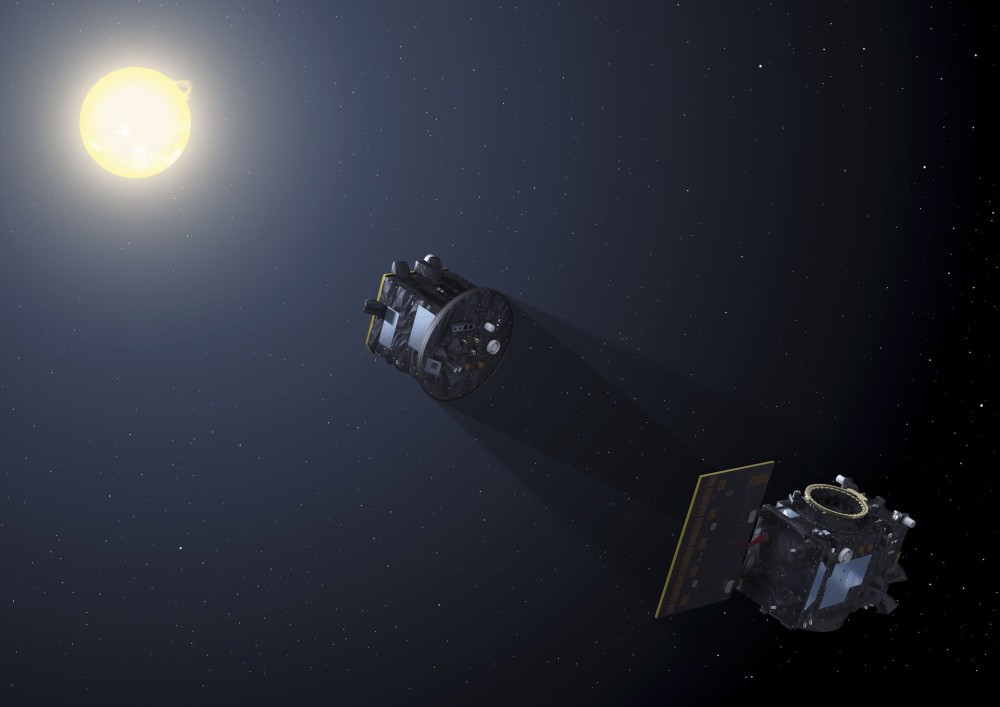Proba-3 achieves new milestone in autonomous formation flying
The Proba-3 space mission has reached another key milestone for its formation flying operations, while making further progress towards achieving its ambitious scientific and technological objectives. During the last few weeks, a team from GMV has been working at the mission’s operations center at the European Space Security and Education Centre (ESEC), to provide on-site support to the teams from the European Space Agency (ESA) and the company Sener. This work is taking place as part of the commissioning activities for components that will allow autonomous formation flying by the mission’s two spacecraft.
Proba-3 is a mission being led by Spain, with Sener coordinating a consortium of 40 companies from 16 countries. It is based on two satellites: the Coronagraph Spacecraft (CSC) and the Occulter Spacecraft (OSC), which will be flying at a distance of 150 meters apart. The mission’s main objective is to demonstrate the feasibility of advanced formation flight technologies. The specific goal is to create a virtual solid structure in space, with the two spacecraft functioning as a single instrument designed to capture detailed observations of the Sun’s corona. The role of the OSC is to block the Sun’s light by generating an artificial eclipse, which will make it possible for the CSC to observe the solar corona without interference.
In the context of this innovative mission, GMV is responsible for the formation flying subsystem (FFS), which is considered to be the Proba‑3 project’s most advanced, complex, and critical component. The purpose of this FFS is to allow the two satellites to maintain the precision and stability necessary to operate as a single virtual rigid structure, which will require millimeter precision in positioning and arcsecond precision in orientation.
Some of the most important activities performed at the ESEC during the last few weeks have been those focused on in‑orbit validation of the functioning of the FFS, in relation to two key types of experiments: scientific observations using coronography, and reconfiguration maneuvers during formation flight. The work completed during this period has allowed two of the mission’s significant milestones to be achieved. For the first time, the CSC and OSC were able to acquire and maintain their relative formation flying positions in a fully autonomous manner, with the CSC pointing towards the Sun and the OSC positioned to cast its shadow onto the coronagraph. In addition, two other formation flying advances were achieved, by integrating relative GPS data during travel through the orbit’s perigee, as well as data from the visual-based system (VBS), with both types of data processed by the formation flight navigation and control modules. This complete operational sequence allowed activation of a high-precision metrology unit known as the fine lateral and longitudinal sensor (FLLS), which will play a key role during the Proba‑3 mission’s operational orbits.
The results achieved during this testing represent substantial progress towards the mission’s ultimate goal: to demonstrate that high-precision formation flying is feasible in space. In addition to validating the system’s operation under real conditions, these tests are paving the way for the scientific operations that Proba‑3 will be performing in the future, which will allow study of the solar corona by creating a controlled artificial eclipse with unprecedented precision.
